Match the columns-I with column-II and select the correct answer :-
Column-I Column-II(A)Pachytene(i)Bouqute stage(B)Zygotene(ii)Chiasma visible(C) Diplotene(iii)Terminalisation(D)Leptotene(iv) Gene exchange(E)Diakinesis(v) Synapsis
A-i, B-ii, C-iii, D-iv, E-v
A-iv, B-v, C-ii, D-i, E-iii
A-iii, B-iv, C-v, D-ii, E-i
A-ii, B-iii, C-iv, D-i, E-v
The correct Answer is:B
To solve the matching question between Column-I and Column-II, we will analyze each stage of prophase in meiosis and match it with the correct description.
1. Identify the stages of prophase in Column-I:
- (A) Pachytene
- (B) Zygotene
- (C) Diplotene
- (D) Leptotene
- (E) Diakinesis
2. Match each stage with the correct description in Column-II:
- (A) Pachytene: This is the third stage of prophase I where homologous chromosomes are fully paired, and gene exchange occurs. Therefore, it matches with (iv) Gene exchange.
- (B) Zygotene: In this stage, homologous chromosomes begin to pair up through a process called synapsis. Thus, it matches with (v) Synapsis.
- (C) Diplotene: During this stage, the paired chromosomes start to separate, and chiasmata (the points where crossing over occurs) become visible. Hence, it matches with (ii) Chiasma visible.
- (D) Leptotene: In this initial stage, chromosomes condense and the telomeres attach to the nuclear envelope, forming a bouquet-like structure. Therefore, it matches with (i) Bouquet stage.
- (E) Diakinesis: This is the final stage of prophase I where the homologous chromosomes are fully separated and ready for metaphase. It is also referred to as terminalization. Thus, it matches with (iii) Terminalisation.
3. Final Matching:
- (A) Pachytene → (iv) Gene exchange
- (B) Zygotene → (v) Synapsis
- (C) Diplotene → (ii) Chiasma visible
- (D) Leptotene → (i) Bouquet stage
- (E) Diakinesis → (iii) Terminalisation
Conclusion:
The correct matches are:
- (A) → (iv)
- (B) → (v)
- (C) → (ii)
- (D) → (i)
- (E) → (iii)
- (A) Pachytene
- (B) Zygotene
- (C) Diplotene
- (D) Leptotene
- (E) Diakinesis
- (A) Pachytene: This is the third stage of prophase I where homologous chromosomes are fully paired, and gene exchange occurs. Therefore, it matches with (iv) Gene exchange.
- (B) Zygotene: In this stage, homologous chromosomes begin to pair up through a process called synapsis. Thus, it matches with (v) Synapsis.
- (C) Diplotene: During this stage, the paired chromosomes start to separate, and chiasmata (the points where crossing over occurs) become visible. Hence, it matches with (ii) Chiasma visible.
- (D) Leptotene: In this initial stage, chromosomes condense and the telomeres attach to the nuclear envelope, forming a bouquet-like structure. Therefore, it matches with (i) Bouquet stage.
- (E) Diakinesis: This is the final stage of prophase I where the homologous chromosomes are fully separated and ready for metaphase. It is also referred to as terminalization. Thus, it matches with (iii) Terminalisation.
- (A) Pachytene → (iv) Gene exchange
- (B) Zygotene → (v) Synapsis
- (C) Diplotene → (ii) Chiasma visible
- (D) Leptotene → (i) Bouquet stage
- (E) Diakinesis → (iii) Terminalisation
The correct matches are:
- (A) → (iv)
- (B) → (v)
- (C) → (ii)
- (D) → (i)
- (E) → (iii)
Topper's Solved these Questions
- CELL BIOLOGY (CELL STRUCTURE, FUNCTION & CELL DIVISION)BOOK - ALLENCHAPTER - CELL BIOLOGY (CELL STRUCTURE, FUNCTION & CELL DIVISION)EXERCISE - EXERCISE-II (Previous Year Questions)
2 Videos
- CELL BIOLOGY (CELL STRUCTURE, FUNCTION & CELL DIVISION)BOOK - ALLENCHAPTER - CELL BIOLOGY (CELL STRUCTURE, FUNCTION & CELL DIVISION)EXERCISE - EXERCISE-II (AIPMT Pre. 2010)
2 Videos
- CELL BIOLOGY (CELL STRUCTURE, FUNCTION & CELL DIVISION)BOOK - ALLENCHAPTER - CELL BIOLOGY (CELL STRUCTURE, FUNCTION & CELL DIVISION)EXERCISE - EXERCISE-IV (Assertion & Reason) (Directions for Assertion & Reason questions)
20 Videos
- BREATHING AND EXCHANGE OF GASESBOOK - ALLENCHAPTER - BREATHING AND EXCHANGE OF GASESEXERCISE - S
33 Videos
- CELL CYCLE AND CELL DIVISIONBOOK - ALLENCHAPTER - CELL CYCLE AND CELL DIVISIONEXERCISE - EXERCISE
61 Videos
Similar Questions
Match column-I with column-II and select the correct answer :-
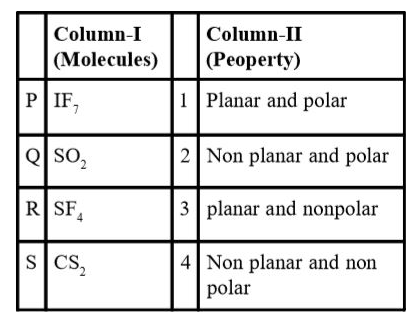
View SolutionMatch the column–I with column–II and select the correct answer :-
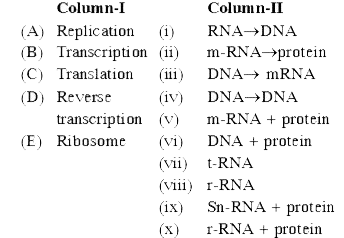
View SolutionMatch column I with column II and select the correct answer :
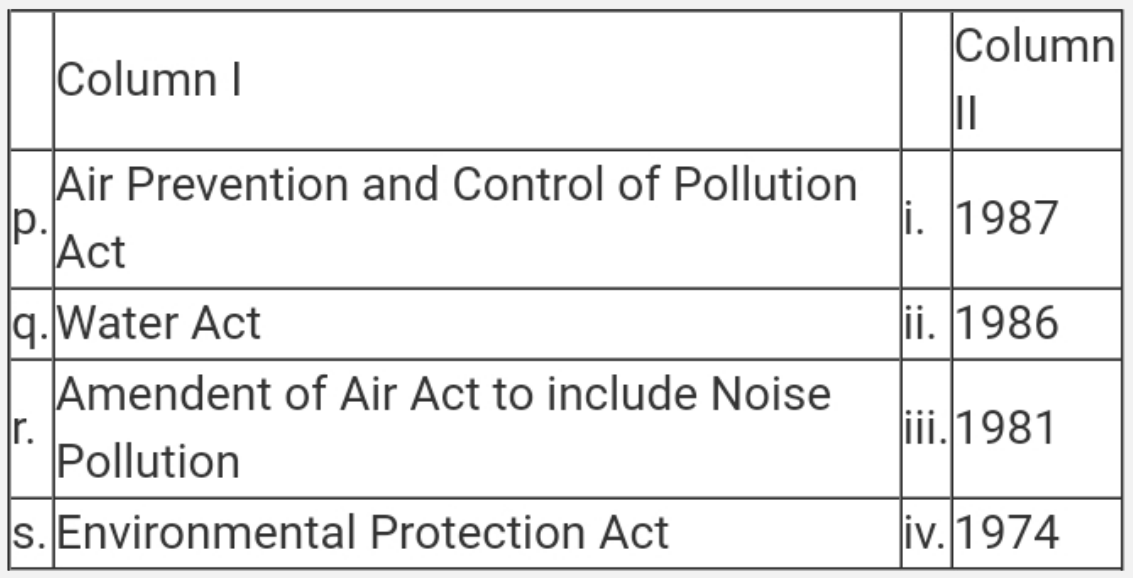
View SolutionMatch the Column -I and Column-II and select the correct answer :-
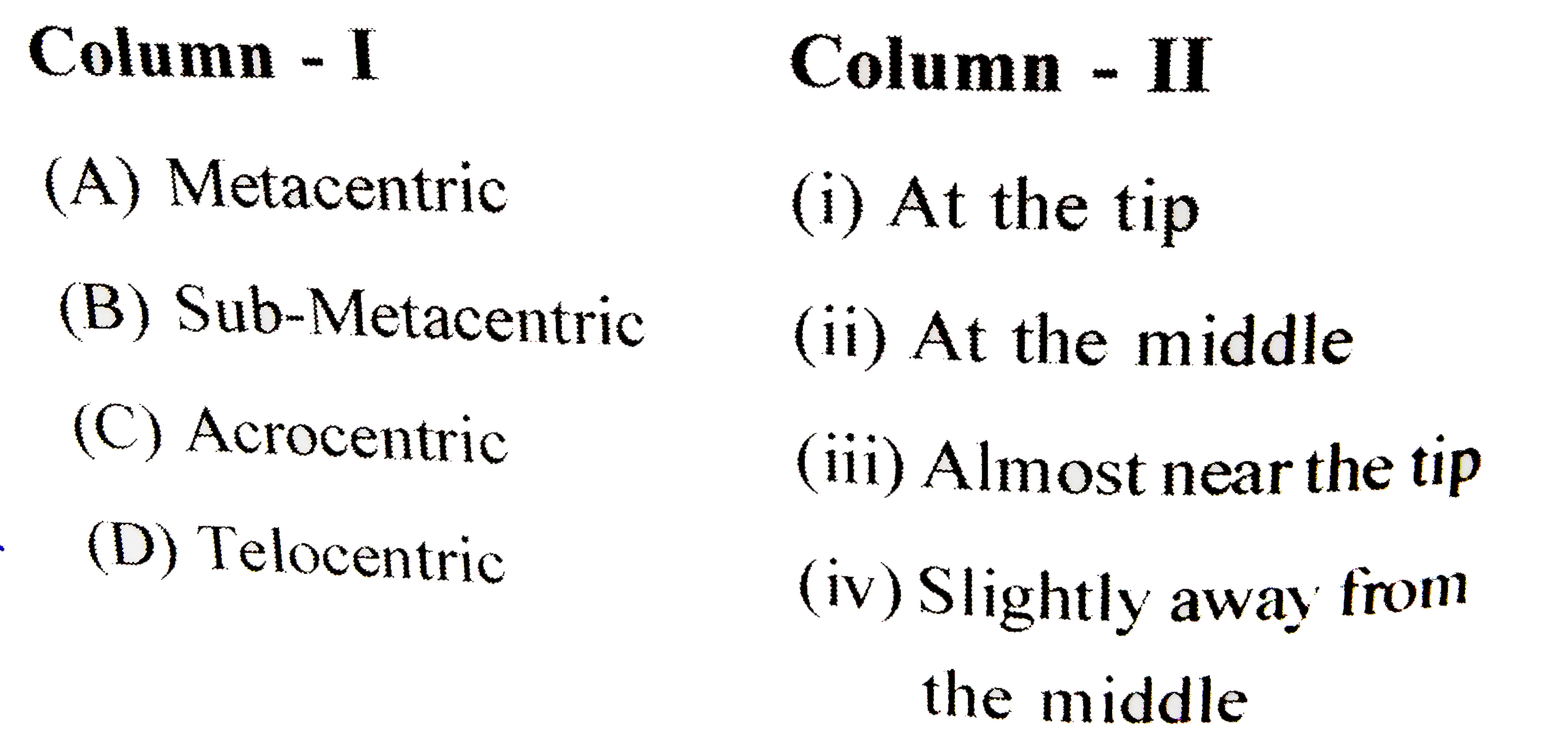
View SolutionMatch the column-I with column-II and select the correct answer.
Column−IColumn−II(A)Pachytene(i)Synizesis(B)Zygotene(ii)Chiasma visible(C)Diplotene(iii)Terminalisation(D)Leptotene(iv)Gene exchange(E)Diakinesis(v)Synapsis
View SolutionMatch column-I and column-II and select the answer :

View SolutionMatch the column I, II and III to select the correct answer

View SolutionMatch column-I to the column-II and select the option having correct matching –
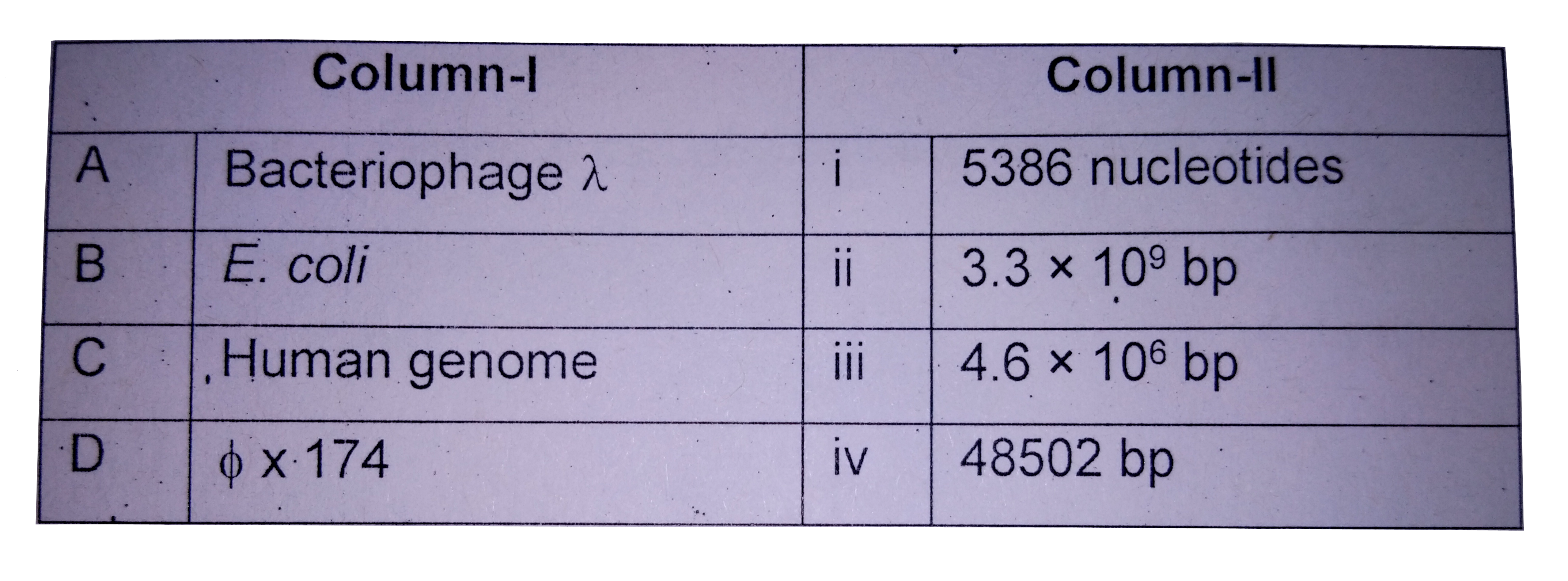
View SolutionMatch column-I with column-II and select the correct option.
Column-IColumn-II(a)Family(i)Solanum tuberosum(b)Kingdom(ii)Polymonials(c)Order(iii)Solanum(d)Species(iv)Plantae(e)Genus(v)Solanaceae
View SolutionMatch column I with column II and select the correct option from the given codes.
Column IColumn IIA. Pedicel(i) Reduced leafB. Peduncle(ii) Stalk of the flowerC. Bract(iii) Stalk of the leafD. Petiole(iv) Infloresences axis
View Solution
